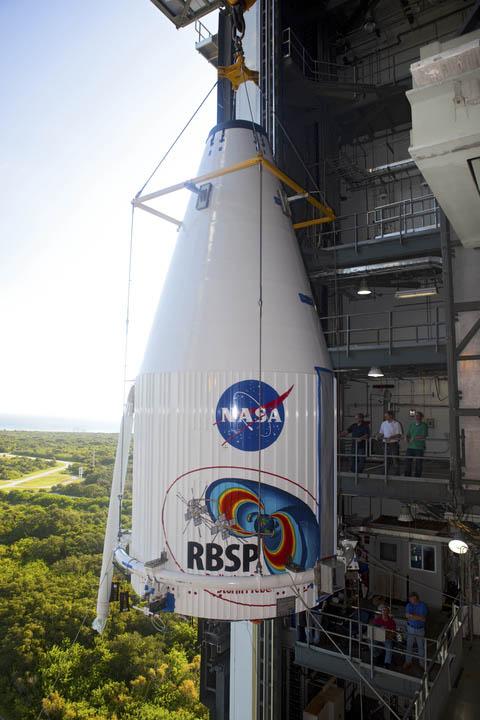
RBSP Spacecraft and fairing make a stop at the VAB, then on to the Vertical Integration Facility (VIF) at Cape Canaveral.
Photo courtesy of NASA-KSC.
Scientific Objectives
"Understanding the radiation belt environment and its variability has extremely important practical applications in the areas of spacecraft operations, spacecraft and spacecraft system design, and mission planning and astronaut safety." —NASA Living With a Star Geospace Mission Definition Team
We are a spacefaring society, ever reliant on space technologies, and the space environment is harsh to both machines and astronauts. Most satellites orbit at high altitudes in the radiation belts, a dynamic region where energetic electrons and ions are trapped in Earth's magnetic fields. Even the low-altitude International Space Station orbit skims the radiation belts, posing serious concerns to astronaut safety.
In order to protect our astronauts from high energy radiation and other adverse effects, and to protect our expanding investment in satellites, it is essential to understand how energetic charged particles are accelerated, transported, and lost in Earth's radiation belts.
The ECT suite of RBSP has four science objectives:
- Determine the physical processes that produce radiation belt enhancements.
- Determine the dominant mechanisms for relativistic electron loss.
- Determine how the inner magnetospheric plasma environment controls radiation belt acceleration/loss.
- Develop empirical and physical models for understanding/predicting radiation belt space weather effects.